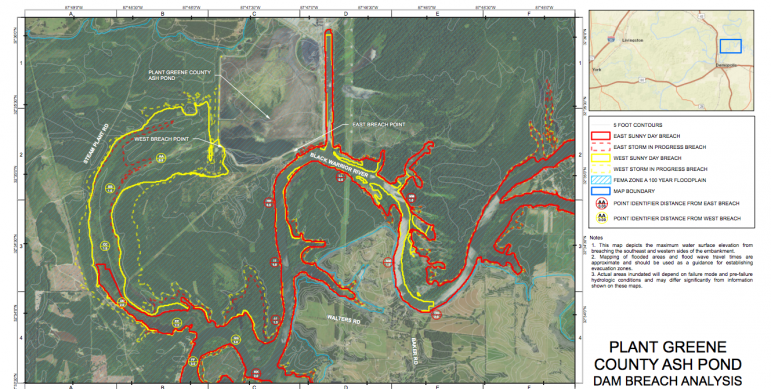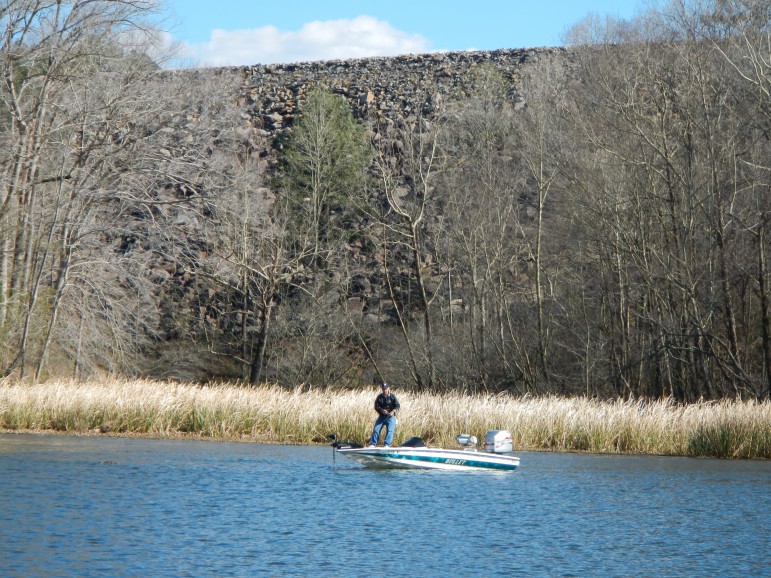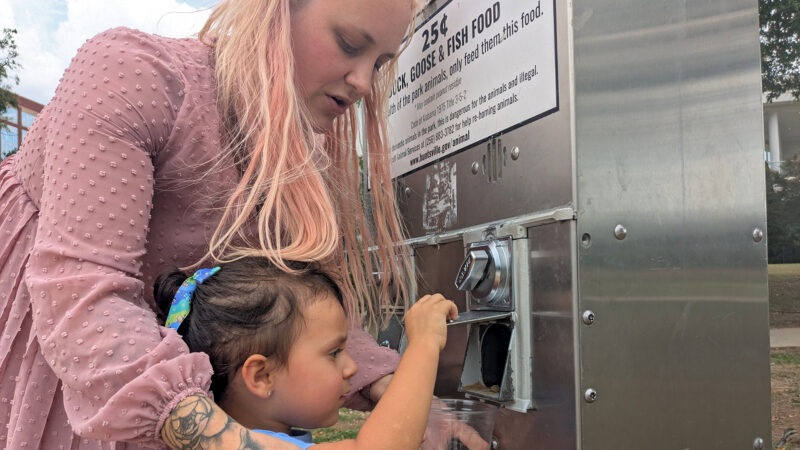Environmental Group Warns of Coal Ash Contamination
Alabama Power recently released coal ash inundation maps. They’re part of emergency action plans required by the Environmental Protection Agency. The maps are meant to show areas that would be affected if dams around coal-ash storage ponds were to breach. The utility says that’s never happened and there’s no imminent danger. But a local environmental group disagrees.
When coal is burned to make electricity, gases go into the air, but the solid stuff left over is coal ash. It’s pretty toxic: it contains substances like arsenic, lead, and mercury. Alabama Power has accumulated tons of coal ash, mixed it with water, and pumped it into a half-dozen unlined ponds or “impoundments” across the state.
Nelson Brooke of Black Warrior Riverkeeper worries any breach of those earthen dams “would be devastating because there’s so much volume stored behind the dam. This is where the power company has pumped their waste for decades.”
Three of the ponds border the Black Warrior River or main tributaries. Brooke says even without a breach, millions of gallons of pollution are going into state waterways every day. Alabama Power says it’s moving away from using the ponds, but plans to cover and leave the current ones. That’s not enough for Brooke. He wants the utility to remove the waste from unlined lagoons near rivers, and in general:
“If we find a problem that’s bad enough, and we can’t get the perpetrator or the regulatory agencies – state or federal – to enforce existing law, then we will resort to taking it to federal court.”
An Alabama Power spokesman emailed a statement calling Black Warrior Riverkeeper’s claims “misleading and inflammatory.” The statement goes on to say, “Riverkeeper implies there is some imminent danger to the river … There is not … The company has never had an impoundment failure.”
But Brooke says if a breach happened during a major downpour, let alone a storm as devastating as the one that recently inundated parts of Texas and other areas on the Gulf Coast, the contamination could be catastrophic.
Here is more of the emailed statement from Alabama Power spokesman Michael Sznajderman:
“The Riverkeeper news release is misleading and inflammatory on several levels:
“Riverkeeper implies there is some imminent danger to the river from our ash facility. There is not. All our ash impoundments are regularly inspected and have received the highest rating from EPA for continued safe and reliable operation. We have operated these facilities safely for decades and have never had an impoundment failure. Each impoundment is inspected thoroughly on an annual basis by qualified Southern Company inspectors with more frequent inspections (multiple times weekly) by plant personnel.
“Alabama Power announced in 2015 that, because of increasing federal regulations, the company planned to eventually close its six ash ponds. Based on the most recent data and analysis, the company has determined that the best, safest and most cost-effective course is to close, consolidate and cap these six facilities in-place at our generating facilities … Details about the specific closure plans at each facility are still being developed and could change over time. The safety and security of our customers and the community is our highest priority.”
Space Command is coming to Huntsville. What might that mean for first-time homebuyers
While Huntsville has been a more affordable market than other growing cities, what’s it been like for those looking for their first home?
Colorado says relocation of Space Command to Alabama is ‘punishment’ for mail-in voting
The litigation announced by Colorado Attorney General Phil Weiser asks a federal judge to block the move as unconstitutional.
Breaking down Alabama’s CHOOSE Act
It’s been a year since Alabama legislators passed the CHOOSE Act allowing families to apply for state funds to use towards homeschool expenses and tuition for participating private schools. The Alabama Daily News’ education reporter Trisha Powell Crain has been diving into how the funds are being used. WBHM’s Andrew Gelderman sat down with her to talk about what we’re seeing so far.
Huntsville is growing fast. Here’s how it’s stayed affordable
Home prices are rising in Huntsville, but so far, the city’s avoided the skyrocketing costs in other boom towns.
What are your unique holiday traditions? NPR wants to know
The holiday season is full of traditions and we all celebrate them a bit differently. NPR wants to your most unique holiday traditions. What makes celebrating this time of year feel special for you?
What are your unique holiday traditions? NPR wants to know
The holiday season is full of traditions and we all celebrate them a bit differently. NPR wants to your most unique holiday traditions. What makes celebrating this time of year feel special for you?










